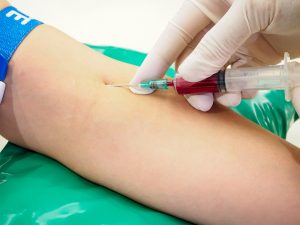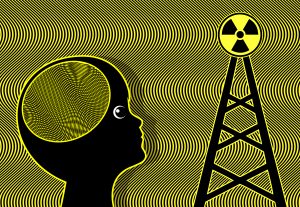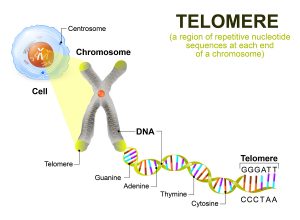T-cell immunotherapy cures chronic lymphocytic leukemia after 10 years. Researchers were able to use the blood of leukemia patients and modify immune cells to attack their cancer cells. Specifically, they introduced a chimeric antigen receptor into immune cells from patients in the lab. Subsequently they transfused the modified immune cells back into the leukemia patients. After 10 years researchers detected the same active cytotoxic T lymphocytes in both chronic lymphocytic leukemia patients, which contained the chimeric antigen receptor marker. This means that active cytotoxic lymphocytes, that also have the name of killer T cells, continued to eliminate any pathological cells from the lymphocytic leukemia patients.
The immune system explained
The immune system can respond with two major responses. The B lymphocytes originate from the bone marrow and turn into antibody producing plasma cells. With viruses this system works very well as it inactivates viruses that the immune system recognizes don’t belong into the body. The other branch of the immune system are the thymus-processed T cells. These are important to eradicate cancer cells. They are also called CD4 cells or cytotoxic T lymphocytes. Often tumor cells produce specific proteins that suppress the immune cells. But the researchers of these two chronic lymphocytic leukemia patients managed to introduce a chimeric antigen receptor into the CD4 cells that specifically targeted the leukemia cells. The immune system in these patients was working optimally and remained active for 10 years.
Some statistics regarding chronic lymphocytic leukemia
Here are some statistics of chronic lymphocytic leukemia (CLL). There were about 61,090 new cases of leukemia and 23,660 deaths from leukemia in 2021 in the US. Among these were 21,250 new cases of chronic lymphocytic leukemia (CLL). There were about 4,320 deaths from CLL. The average lifetime risk of getting CLL is 1 in 175 people or 0.5% of the population. The risk of getting CLL is slightly higher for men than women. CLL is a leukemia of older people, the average age at the time of diagnosis is 70 years. CLL is rare under the age of 40 and extremely rare in children.
Potential serious side effects of T-cell immunotherapy
Dr. David Porter, one of the authors of the study published in Nature said that this type of immunotherapy can have serious side effects. He added that therapies have become safer over the years. Oncologists are giving immunotherapies like the one which I described to hundreds and thousands of patients.
Here are the more common side effects.
- The tumor lysis syndrome: when the tumor cells are all attacked at the same time, there is a lot of tumor cell destruction and the contents of the cells end up in the blood. This makes the patient rather sick for a few days. There can be serious electrolyte abnormalities that have to be countered with intravenous fluids. The toxins can also cause kidney damage, which physicians monitor closely.
- Cytokine release syndrome: With this syndrome people develop a high fever, nausea, vomiting, much like a severe flu. They also develop muscle aches and joint pains. Patients can develop extremely low blood pressure. This occurs because fluid leaks into the lungs, which also causes problems breathing.
- Neurologic toxicity: There can be a loss of speech and thought disturbances. Seizures can develop and the patients may turn comatose. Nevertheless most patients recover from this spontaneously.
Details of one case of CLL with successful treatment
Doug Olson was one of the patients who was studied in the publication in Nature. His original diagnosis was chronic lymphocytic leukemia when he was 49 years old. For 6 years he did not need much treatment. But then his leukemia flared up and chemotherapy got his CLL into remission for 5 years. Generally, leukemia behaves this way that treatment gets it into remission (meaning the leukemia is controlled). But on another occasion, it gets into a relapse, which means the leukemia flares up again. 11 years after the original diagnosis of the CLL there was a rapid decline due to another relapse. In a bone marrow biopsy 50% of the white blood cells were CLL and 50% were normal.
Infusion of CAR-T cells
He received his first infusion of CAR-T cells in September of 2010. Following this he became very sick and the oncologist hospitalized him for three days. One week later the oncologist could not find any more cancer cells in his body. But the cancer specialists were very reluctant to call it a cure at that time. Fast forward 10 years. And now there are still no cancer cells in Doug’s body. The blood analysis showed that active CAR-T cells are in Doug’s blood monitoring for him that no CLL cells reoccur. Now, 21 years after the initial diagnosis of his CLL the oncologists are convinced that the T-Cell Immunotherapy was what cured Doug.
Discussion
CLL is a special form of blood cancer. Chemotherapy has been successful in increasing survivor rates over the years. But the end of the patient with CLL comes from a final relapse of this leukemia form, which eventually no longer responds to chemotherapy. The researchers in this publication used a novel immunotherapy approach, where they introduced a chimeric antigen receptor into immune cells of patients in the lab. Subsequently they transfused this back into the leukemia patients.
T-cell Immunotherapy used surveillance T cells successfully
These modified immune cells became the “surveillance team” that eradicated new CLL cells and destroyed them on an ongoing basis. This immune therapy is getting rid of the last CLL tumor cell. The two cases described in this paper and investigated thoroughly after 10 years of immunotherapy intervention were completely free of CLL cells in their bone marrow biopsies. Two cases are not enough data, but it is a powerful result for a pilot study. Oncologists have to produce much larger clinical trials with more patients. This establishes that this new immunotherapy is superior to conventional chemotherapy and indeed prolongs survival compared to chemotherapy alone.
Conclusion
This pilot study showed that the immune system can be stimulated to suppress and eradicate leukemia (CLL) cancer cells. The authors introduced a chimeric antigen receptor into immune cells that were taken from patients. The researchers obtained blood samples. Then they introduced a chimeric antigen receptor into immune cells in the lab. Subsequently they injected these CAR-T cells back into the CLL patients. In these patients the CAR-T cells behaved like surveillance cells, which eradicated leukemia cancer cells on an ongoing basis. After 10 years of follow-up in two patients in this pilot study the clinicians could not find any CLL cancer cells in their bone marrows, but the CAR-T cells were still present. This type of study is encouraging as it is a model for immunotherapy of other cancers. It is a promising start, but obviously researchers need to do more studies to fine-tune cancer immunotherapy.











